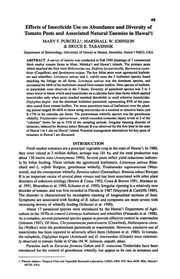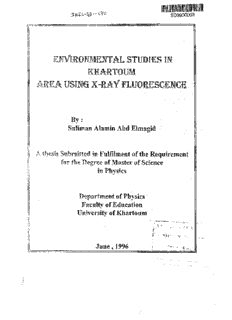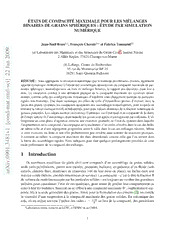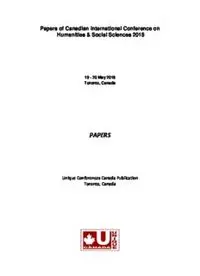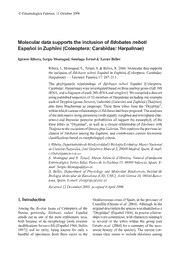
Preview AWS Lambda - Developer Guide
AWS Lambda Developer Guide AWS Lambda Developer Guide AWS Lambda: Developer Guide Copyright © 2017 Amazon Web Services, Inc. and/or its affiliates. All rights reserved. Amazon's trademarks and trade dress may not be used in connection with any product or service that is not Amazon's, in any manner that is likely to cause confusion among customers, or in any manner that disparages or discredits Amazon. All other trademarks not owned by Amazon are the property of their respective owners, who may or may not be affiliated with, connected to, or sponsored by Amazon. AWS Lambda Developer Guide Table of Contents What Is AWS Lambda? ....................................................................................................................... 1 When should I Use Lambda? ....................................................................................................... 1 Are You a First-time User of AWS Lambda? ................................................................................... 2 Lambda Functions .............................................................................................................................. 3 Compute Requirements – Lambda Function Configuration ................................................................ 3 Invocation Types ........................................................................................................................ 4 Building Lambda Functions .......................................................................................................... 5 Authoring Code for Your Lambda Function ............................................................................. 5 Deploying Code and Creating a Lambda Function ................................................................... 6 Monitoring and Troubleshooting ............................................................................................ 7 AWS Lambda-Based Application Examples ............................................................................ 7 Related Topics ................................................................................................................... 8 Programming Model ............................................................................................................ 8 Creating a Deployment Package ......................................................................................... 58 Versioning and Aliases ...................................................................................................... 73 Environment Variables ....................................................................................................... 85 VPC Support ............................................................................................................................ 92 Configuring a Lambda Function for Amazon VPC Access ........................................................ 92 Internet Access for Lambda Functions ................................................................................. 93 Guidelines for Setting Up VPC-Enabled Lambda Functions ..................................................... 93 Tutorials: Accessing Resources in an Amazon VPC ............................................................... 94 Troubleshooting and Monitoring ................................................................................................. 103 Troubleshooting Scenarios ................................................................................................ 104 Accessing CloudWatch Metrics .......................................................................................... 105 Accessing CloudWatch Logs ............................................................................................. 106 Metrics ........................................................................................................................... 107 Dead Letter Queues ........................................................................................................ 109 Building Applications with AWS Lambda ............................................................................................. 111 Example 1 .............................................................................................................................. 112 Example 2 .............................................................................................................................. 113 Example 3: Custom Application Publishes Events and Invokes a Lambda Function ............................ 114 Event Source Mapping ............................................................................................................. 116 Event Source Mapping for AWS Services ........................................................................... 116 Event Source Mapping for AWS Stream-based Services ....................................................... 117 Event Source Mapping for Custom Applications ................................................................... 119 Supported Event Sources ......................................................................................................... 120 Amazon S3 .................................................................................................................... 121 Amazon DynamoDB ........................................................................................................ 121 Amazon Kinesis Streams ................................................................................................. 121 Amazon Simple Notification Service ................................................................................... 121 Amazon Simple Email Service .......................................................................................... 122 Amazon Cognito ............................................................................................................. 122 AWS CloudFormation ...................................................................................................... 123 Amazon CloudWatch Logs ............................................................................................... 123 Amazon CloudWatch Events ............................................................................................. 123 AWS CodeCommit .......................................................................................................... 123 Scheduled Events (powered by Amazon CloudWatch Events) ................................................ 124 AWS Config ................................................................................................................... 124 Amazon Echo ................................................................................................................. 124 Amazon Lex ................................................................................................................... 125 Amazon API Gateway ...................................................................................................... 125 Other Event Sources: Invoking a Lambda Function On Demand ............................................. 125 Sample Event Data ......................................................................................................... 125 Deploying Lambda-based Applications ........................................................................................ 133 iii AWS Lambda Developer Guide Deploying Serverless Applications Using AWS CloudFormation .............................................. 133 Using the AWS Serverless Application Model (AWS SAM) ..................................................... 134 Create Your Own Serverless Application ............................................................................. 138 Automating Deployment of Lambda-based Applications ......................................................... 141 How It Works ................................................................................................................................. 146 How Does AWS Lambda Run My Code? The Container Model ...................................................... 146 Concurrent Executions ............................................................................................................. 147 Concurrent Execution Request Rate .................................................................................. 147 Concurrent Executions Limit ............................................................................................. 147 Retries on Errors .................................................................................................................... 149 Permissions Model .................................................................................................................. 150 Manage Permissions: Using an IAM Role (Execution Role) .................................................... 150 Manage Permissions: Using a Lambda Function Policy ......................................................... 151 Execution Environment ............................................................................................................. 152 Environment Variables Available to Lambda Functions .......................................................... 153 Getting Started ............................................................................................................................... 155 Step 1: Set Up an AWS Account and the AWS CLI ...................................................................... 155 Step 1.1: Set Up an Account ............................................................................................ 155 Step 1.2: Set Up the AWS CLI .......................................................................................... 158 Step 2: Create a HelloWorld Lambda Function and Explore the Console .......................................... 158 Preparing for the Getting Started ....................................................................................... 159 Step 2.1: Create a Hello World Lambda Function ................................................................. 159 Step 2.2: Invoke the Lambda Function ............................................................................... 162 Step 2.3: (Optional) Create a Lambda Function Authored in Java ............................................ 164 Step 2.4: (Optional) Create a Lambda Function Authored in C# .............................................. 165 Step 3: Create a Simple Microservice using Lambda and API Gateway ............................................ 166 Next Step ....................................................................................................................... 166 Step 3.1: Create an API Using Amazon API Gateway ........................................................... 166 Step 3.2: Test Sending an HTTPS Request ........................................................................ 167 Step 3.3: (Optional) Try Other Blueprints ............................................................................ 168 What's Next? .................................................................................................................. 168 Use Cases ..................................................................................................................................... 169 Amazon S3 ............................................................................................................................ 169 Tutorial .......................................................................................................................... 171 Amazon Kinesis ...................................................................................................................... 186 Tutorial .......................................................................................................................... 187 Amazon DynamoDB ................................................................................................................ 196 Tutorial .......................................................................................................................... 197 AWS CloudTrail ...................................................................................................................... 207 Tutorial .......................................................................................................................... 208 Amazon SNS .......................................................................................................................... 222 Tutorial .......................................................................................................................... 222 Amazon API Gateway .............................................................................................................. 227 Using AWS Lambda with Amazon API Gateway (On-Demand Over HTTPS) ............................. 228 Mobile Backend (Android) ........................................................................................................ 240 Tutorial .......................................................................................................................... 242 Scheduled Events ................................................................................................................... 253 Tutorial .......................................................................................................................... 253 Custom User Applications ........................................................................................................ 259 Tutorial .......................................................................................................................... 259 AWS AWS Lambda Developer Guide API Logging with AWS CloudTrail ...................................................................................................... 271 AWS Lambda Information in CloudTrail ...................................................................................... 271 Understanding AWS Lambda Log File Entries ............................................................................. 272 Best Practices ................................................................................................................................ 274 Limits ............................................................................................................................................ 275 List of AWS Lambda Limits ...................................................................................................... 275 AWS Lambda Limit Errors ........................................................................................................ 276 Authentication and Access Control ..................................................................................................... 277 Authentication ......................................................................................................................... 277 Access Control ....................................................................................................................... 278 Overview of Managing Access .................................................................................................. 279 AWS Lambda Resources and Operations ........................................................................... 279 Understanding Resource Ownership .................................................................................. 280 Managing Access to Resources ........................................................................................ 280 Specifying Policy Elements: Actions, Effects, Resources, and Principals ................................... 282 Specifying Conditions in a Policy ....................................................................................... 283 Using Identity-Based Policies (IAM Policies) ................................................................................ 283 Permissions Required to Use the AWS Lambda Console ...................................................... 284 AWS Managed (Predefined) Policies for AWS Lambda ......................................................... 284 Customer Managed Policy Examples ................................................................................. 285 Console Permissions ....................................................................................................... 288 Using Resource-Based Policies (Lambda Function Policies) ........................................................... 295 Allow Amazon S3 to Invoke a Lambda Function .................................................................. 296 Allow Amazon API Gateway to Invoke a Lambda Function .................................................... 297 Cross-Account Scenario ................................................................................................... 298 Retrieve a Lambda Function Policy .................................................................................... 298 Remove Permissions ....................................................................................................... 298 Working with Lambda Function Versioning, Aliases, and Permissions ...................................... 298 Lambda API Permissions Reference .......................................................................................... 299 Policy Templates ..................................................................................................................... 301 Basic: 'Basic Lambda Permissions' .................................................................................... 301 VPCAccess: 'Lambda VPC Access Permissions' .................................................................. 302 Kinesis: 'Lambda Kinesis stream poller permissions' ............................................................. 302 DynamoDB: 'Lambda DynamoDB stream poller permissions' .................................................. 303 Edge: 'Basic Edge Lambda permissions' ............................................................................. 303 RedrivePolicySNS: ‘Dead letter queue SNS permissions’ ....................................................... 303 RedrivePolicySQS: 'Dead letter queue SQS permissions' ...................................................... 304 CloudFormation: 'CloudFormation stack read-only permissions' .............................................. 304 AMI: 'AMI read-only permissions' ....................................................................................... 304 KMS: 'KMS decryption permissions' ................................................................................... 305 S3: 'S3 object read-only permissions' ................................................................................. 305 Elasticsearch: 'Elasticsearch permissions' ........................................................................... 305 SES: 'SES bounce permissions' ........................................................................................ 305 TestHarness: 'Test Harness permissions' ............................................................................ 306 Microservice: 'Simple Microservice permissions' ................................................................... 306 VPN: 'VPN Connection Monitor permissions' ....................................................................... 306 SQS: 'SQS Poller permissions' .......................................................................................... 307 IoTButton: 'AWS IoT Button permissions' ............................................................................ 307 RekognitionNoDataAccess:'Amazon Rekognition no data permissions' ..................................... 307 RekognitionReadOnlyAccess: 'Amazon Rekognition read-only permissions' .............................. 308 RekognitionWriteOnlyAccess: 'Amazon Rekognition write-only permissions' .............................. 308 API Reference ................................................................................................................................ 309 Actions .................................................................................................................................. 309 AddPermission ................................................................................................................ 311 CreateAlias ..................................................................................................................... 315 CreateEventSourceMapping .............................................................................................. 318 CreateFunction ............................................................................................................... 322 v AWS Lambda Developer Guide DeleteAlias ..................................................................................................................... 328 DeleteEventSourceMapping .............................................................................................. 330 DeleteFunction ................................................................................................................ 333 GetAccountSettings ......................................................................................................... 335 GetAlias ......................................................................................................................... 337 GetEventSourceMapping .................................................................................................. 339 GetFunction .................................................................................................................... 342 GetFunctionConfiguration ................................................................................................. 345 GetPolicy ....................................................................................................................... 349 Invoke ........................................................................................................................... 351 InvokeAsync ................................................................................................................... 355 ListAliases ...................................................................................................................... 357 ListEventSourceMappings ................................................................................................. 359 ListFunctions .................................................................................................................. 362 ListVersionsByFunction .................................................................................................... 364 PublishVersion ................................................................................................................ 367 RemovePermission .......................................................................................................... 371 UpdateAlias .................................................................................................................... 373 UpdateEventSourceMapping ............................................................................................. 376 UpdateFunctionCode ....................................................................................................... 379 UpdateFunctionConfiguration ............................................................................................. 384 Data Types ............................................................................................................................ 389 AccountLimit ................................................................................................................... 390 AccountUsage ................................................................................................................ 391 AliasConfiguration ............................................................................................................ 392 DeadLetterConfig ............................................................................................................ 393 Environment ................................................................................................................... 394 EnvironmentError ............................................................................................................ 395 EnvironmentResponse ..................................................................................................... 396 EventSourceMappingConfiguration ..................................................................................... 397 FunctionCode ................................................................................................................. 399 FunctionCodeLocation ...................................................................................................... 400 FunctionConfiguration ...................................................................................................... 401 VpcConfig ...................................................................................................................... 404 VpcConfigResponse ........................................................................................................ 405 Document History ............................................................................................................................ 406 AWS Glossary ................................................................................................................................ 412 vi AWS Lambda Developer Guide When should I Use Lambda? What Is AWS Lambda? AWS Lambda is a compute service that lets you run code without provisioning or managing servers. AWS Lambda executes your code only when needed and scales automatically, from a few requests per day to thousands per second. You pay only for the compute time you consume - there is no charge when your code is not running. With AWS Lambda, you can run code for virtually any type of application or backend service - all with zero administration. AWS Lambda runs your code on a high-availability compute infrastructure and performs all of the administration of the compute resources, including server and operating system maintenance, capacity provisioning and automatic scaling, code monitoring and logging. All you need to do is supply your code in one of the languages that AWS Lambda supports (currently Node.js, Java, C# and Python). You can use AWS Lambda to run your code in response to events, such as changes to data in an Amazon S3 bucket or an Amazon DynamoDB table; to run your code in response to HTTP requests using Amazon API Gateway; or invoke your code using API calls made using AWS SDKs. With these capabilities, you can use Lambda to easily build data processing triggers for AWS services like Amazon S3 and Amazon DynamoDB process streaming data stored in Amazon Kinesis, or create your own back end that operates at AWS scale, performance, and security. You can also build serverless applications composed of functions that are triggered by events and automatically deploy them using AWS CodePipeline and AWS CodeBuild. For more information, see Deploying Lambda-based Applications (p. 133). For more information about the AWS Lambda execution environment, see Lambda Execution Environment and Available Libraries (p. 152). For information about how AWS Lambda determines compute resources required to execute your code, see Compute Requirements – Lambda Function Configuration (p. 3). When Should I Use AWS Lambda? AWS Lambda is an ideal compute platform for many application scenarios, provided that you can write your application code in languages supported by AWS Lambda (that is, Node.js, Java, C# and Python), and run within the AWS Lambda standard runtime environment and resources provided by Lambda. When using AWS Lambda, you are responsible only for your code. AWS Lambda manages the compute fleet that offers a balance of memory, CPU, network, and other resources. This is in exchange for flexibility, which means you cannot log in to compute instances, or customize the operating system or language runtime. These constraints enable AWS Lambda to perform operational and administrative activities on 1 AWS Lambda Developer Guide Are You a First-time User of AWS Lambda? your behalf, including provisioning capacity, monitoring fleet health, applying security patches, deploying your code, and monitoring and logging your Lambda functions. If you need to manage your own compute resources, Amazon Web Services also offers other compute services to meet your needs. • Amazon Elastic Compute Cloud (Amazon EC2) service offers flexibility and a wide range of EC2 instance types to choose from. It gives you the option to customize operating systems, network and security settings, and the entire software stack, but you are responsible for provisioning capacity, monitoring fleet health and performance, and using Availability Zones for fault tolerance. • Elastic Beanstalk offers an easy-to-use service for deploying and scaling applications onto Amazon EC2 in which you retain ownership and full control over the underlying EC2 instances. Are You a First-time User of AWS Lambda? If you are a first-time user of AWS Lambda, we recommend that you read the following sections in order: 1. Read the product overview and watch the introductory video to understand sample use cases. These resources are available on the AWS Lambda webpage. Read the "How It Works" section of this guide. This section introduces various AWS Lambda components you work with to create an end-to-end experience. For more information, see How It Works (p. 146). 2. Review the “Lambda Functions” section of this guide. To understand the programming model and deployment options for a Lambda function there are core concepts you should be familiar with. This section explains these concepts and provides details of how they work in different languages that you can use to author your Lambda function code. For more information, see Lambda Functions (p. 3). 3. Try the console-based Getting Started exercise. The exercise provides instructions for you to create and test your first Lambda function using the console. You also learn about the console provided blueprints to quickly create your Lambda functions. For more information, see Getting Started (p. 155). 4. Read the "Building Applications with AWS Lambda" section of this guide. This section introduces various AWS Lambda components you work with to create an end-to-end experience. For more information, see Building applications with AWS Lambda (p. 111). Beyond the Getting Started exercise, you can explore the various use cases, each of which is provided with a tutorial that walks you through an example scenario. Depending on your application needs (for example, whether you want event driven Lambda function invocation or on-demand invocation), you can follow specific tutorials that meet your specific needs. For more information, see Use Cases (p. 169). The following topics provide additional information about AWS Lambda: • AWS Lambda Function Versioning and Aliases (p. 73) • Troubleshooting and Monitoring AWS Lambda Functions with Amazon CloudWatch (p. 103) • Best Practices for Working with AWS Lambda Functions (p. 274) • AWS Lambda Limits (p. 275) 2 AWS Lambda Developer Guide Compute Requirements – Lambda Function Configuration Lambda Functions After you package up your custom code, including any dependencies, and upload it to AWS Lambda, you have created a Lambda function. If you are new to AWS Lambda, you might ask: what type of code can I run as a Lambda function? How does AWS Lambda execute my code? How does AWS Lambda know the amount of memory and CPU requirements needed to run my Lambda code? The following sections provide an overview of how a Lambda function works. Depending on your scenario, you can build applications where you use the AWS Lambda service to run all or parts of your application code. For more information, see Building Lambda Functions (p. 5). How It Works (p. 146) provides examples that illustrate how to create a Lambda function for specific scenarios. The sections in this topic provide the following introductory information about Lambda functions: Topics • Compute Requirements – Lambda Function Configuration (p. 3) • Invocation Types (p. 4) • Introduction: Building Lambda Functions (p. 5) • Configuring a Lambda Function to Access Resources in an Amazon VPC (p. 92) • Troubleshooting and Monitoring AWS Lambda Functions with Amazon CloudWatch (p. 103) Compute Requirements – Lambda Function Configuration A Lambda function consists of code and any associated dependencies. In addition, a Lambda function also has configuration information associated with it. Initially, you specify the configuration information when you create a Lambda function. Lambda provides an API for you to update some of the configuration data. Lambda function configuration information includes the following key elements: • Compute resources that you need – You only specify the amount of memory you want to allocate for your Lambda function. AWS Lambda allocates CPU power proportional to the memory by using the same ratio as a general purpose Amazon EC2 instance type, such as an M3 type. For example, if you allocate 256 MB memory, your Lambda function will receive twice the CPU share than if you allocated only 128 MB. You can update the configuration and request additional memory in 64 MB increments. For information about relevant limits, see AWS Lambda Limits (p. 275). 3 AWS Lambda Developer Guide Invocation Types To change the amount of memory your Lambda function requires, do the following: 1. Sign in to the AWS Management Console and navigate to the AWS Lambda console. 2. Choose the function whose memory size you wish to change. 3. Click the Configuration tab and then expand Advanced settings. 4. In the Memory (MB) list, choose your desired amount. Optionally, you can update the memory size of your functions using the following AWS CLI command (using valid 64 MB increments): $ aws lambda update-function-configuration \ --function-name your function name \ --region region where your function resides \ --memory-size memory amount \ --profile adminuser For information on setting up and using the AWS CLI, see Step 1: Set Up an AWS Account and the AWS CLI (p. 155). • Maximum execution time (timeout) – You pay for the AWS resources that are used to run your Lambda function. To prevent your Lambda function from running indefinitely, you specify a timeout. When the specified timeout is reached, AWS Lambda terminates your Lambda function. • IAM role (execution role) – This is the role that AWS Lambda assumes when it executes the Lambda function on your behalf. • Handler name – The handler refers to the method in your code where AWS Lambda begins execution. AWS Lambda passes any event information, which triggered the invocation, as a parameter to the handler method. Invocation Types AWS Lambda supports synchronous and asynchronous invocation of a Lambda function. You can control the invocation type only when you invoke a Lambda function (referred to as on-demand invocation). The following examples illustrate on-demand invocations: • Your custom application invokes a Lambda function. • You manually invoke a Lambda function (for example, using the AWS CLI) for testing purposes. In both cases, you invoke your Lambda function using the Invoke (p. 351) operation, and you can specify the invocation type as synchronous or asynchronous. However, when you are using AWS services as event sources, the invocation type is predetermined for each of these services. You don't have any control over the invocation type that these event sources use when they invoke your Lambda function. For example, Amazon S3 always invokes a Lambda function asynchronously and Amazon Cognito always invokes a Lambda function synchronously. For stream- 4
The list of books you might like

A Thousand Boy Kisses

The Mountain Is You

The Subtle Art of Not Giving a F*ck

Shatter Me Complete Collection (Shatter Me; Destroy Me; Unravel Me; Fracture Me; Ignite Me)

NYT 2020-03-31 UserUpload Net

Blume, Heinrich Das politische Gesicht

This Man Confessed
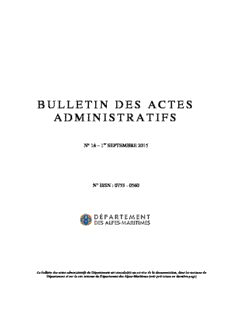
Bulletin des Actes administratifs n°18

al-Qushayri’s Epistle on Sufism: al-Risala al-Qushayriyya fi Ilm al-Tasawwuf
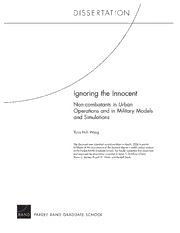
DTIC ADA487760: Ignoring the Innocent: Non-combatants in Urban Operations and in Military Models and Simulations
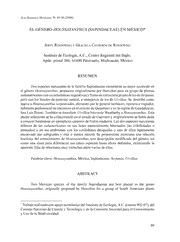
El género Houssayanthus (Sapindaceae) en México

Un coeur en pleine santé : une ressource pour l'éducation physique au secondaire deuxième cycle
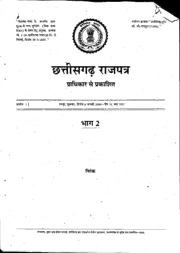
Chhattisgarh Gazette, 2006-01-06, No. 1, Pt. 2
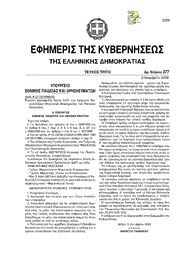
Greek Government Gazette: Part 3, 2006 no. 377

Harry Joscelyn vol 3 by Mrs Oliphant

ERIC ED510540: Benefits of a High School Core Curriculum
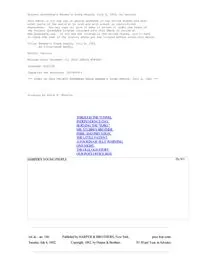
Harpers Young People July 4 1882 by Various

Cinemascope - Issue 44 - Fall 2010 issue 44
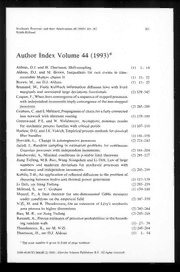
Stochastic Processes and Their Applications 1993: Vol 44 Index
